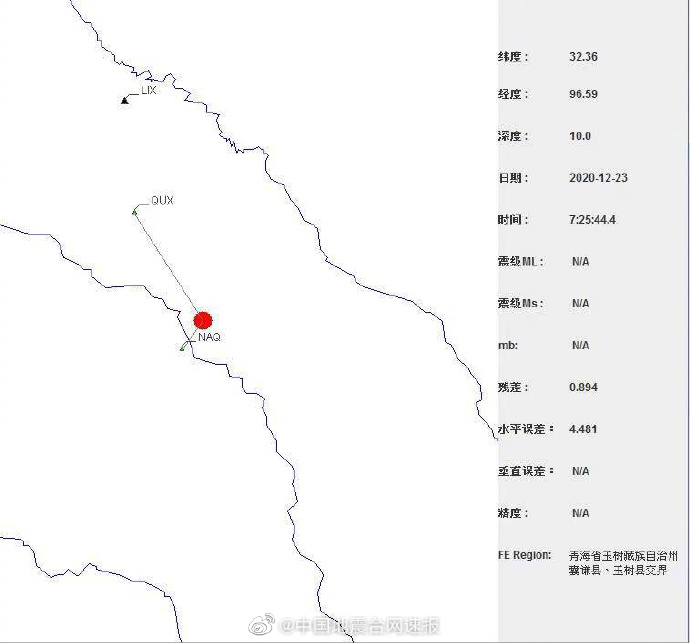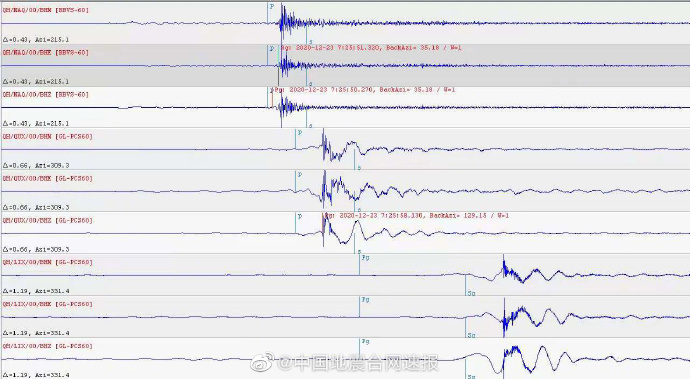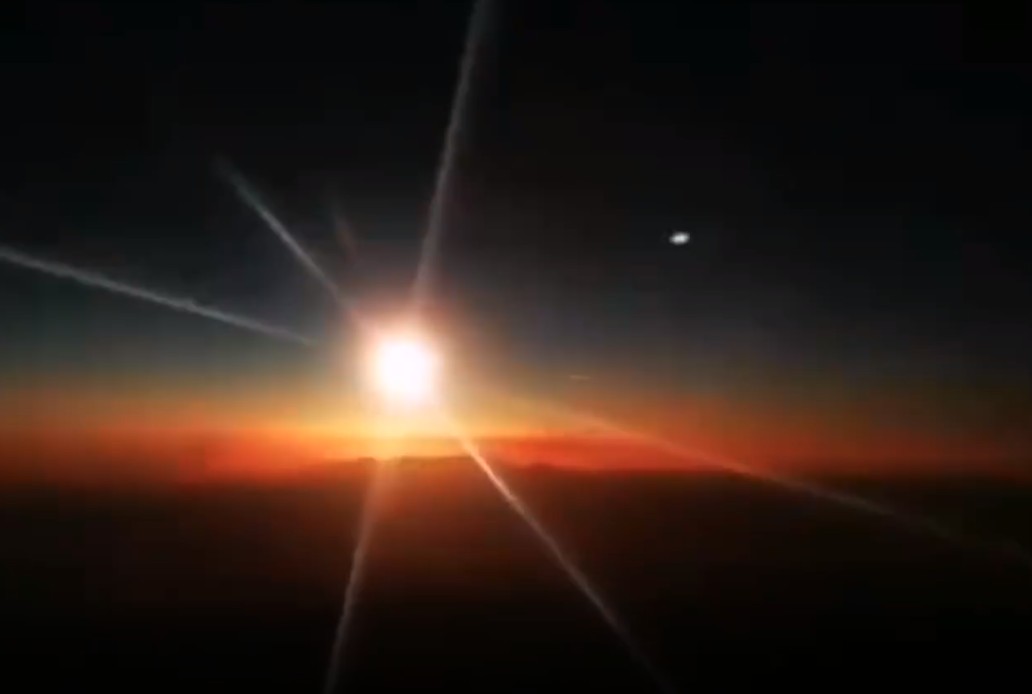Spectacular fireball explodes over China’s Yushu City, the largest fireball event since December 2018

A spectacular fireball exploded over northwestern China's Yushu City, Qinghai Province at around 23:23 UTC on December 22, 2020 (07:23 LT, December 23). The event lasted up to 20 seconds. Many locals reported hearing a series of loud bangs.
- The event was recorded by CNEOS at coordinates 31.9N / 96.2E and an altitude of 35.5 km (22 miles).
- This is by far the largest recorded fireball event of the year, the largest since December 18, 2018, and the 15th largest on record.
- For China, this is the largest fireball since 1988.
China Earthquake Networks Center confirmed their Qinghai Seismic Network recorded impact at 23:25:44 UTC at coordinates 32.36N /96.59E. This places it near the border between the counties of Nangqian and Yushu.


Images courtesy CENC, Weibo
The agency said many netizens in Yushu photographed the object as it 'illuminated the night sky like daylight.'
"From the videos, the flying object has been broken in the air, and many meteorite fragments may have fallen to the ground."
Authorities said no one was injured.
The object was also spotted by passengers on a plane traveling from Xi'an to Lhasa:


Credit: Weibo
The event was recorded by CNEOS at 23:23 UTC at coordinates 31.9N / 96.2E and an altitude of 35.5 km (22 miles). The object was traveling at a speed of 13.6 km/s.
The approximate total optical radiated energy was 489.8e10 Joules, which is equivalent to the energy released by the explosion of 9.5 kilotons of TNT.
This is by far the largest recorded fireball event of the year, the largest since December 18, 2018, and the 15th largest on record. For China, this is the largest fireball event since 1988.
At present, the largest recorded fireball event in the world is the Russian Chelyabinsk event of February 15, 2013. The total optical radiated energy was as high as 3.75e14 Joules, which is equivalent to the energy released by the explosion of 440 kilotons of TNT.
This object exploded some 29.7 km (18.5 miles) above the Russian city of Chelyabinsk at 03:20 UTC on February 15, 2013, damaging over 3 000 buildings and injuring over 1 500 people (mostly by broken window glass).
Although it was just about 20 m (65 feet), its light was brighter than the Sun and visible up to 100 km (62 miles) away.
Chelyabinsk asteroid, officially named Chelyabinsk meteorite, was undetected before its atmospheric entry, in part because its radiant was close to the Sun.
See it on the video below. Check your speakers before you press play; loud asteroid explosion:


Featured image: Very bright fireball over Qinghai, China on December 22, 2020. Credit: Weibo

is this real
https://www.bitchute.com/video/6HU3lBZFDYWw/
Why not. It’s an airplane and our good old sun. See this one 🙂 https://www.youtube.com/watch?v=epa6WxEw1Xk If you follow recommended videos you’ll find many more. Best!